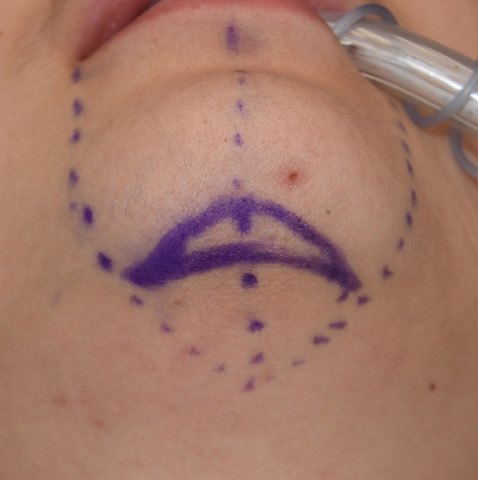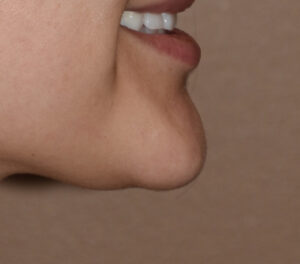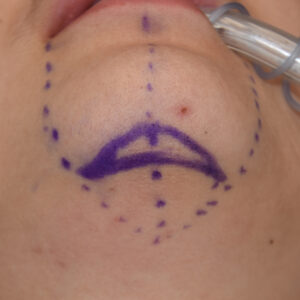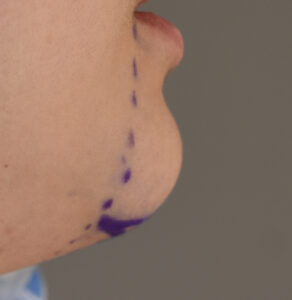Background: Excesses of the chin are commonly perceived as an over projection of bone which is easily seen in profile in the static position. (non-smiling) While this is true in many cases it is not always so. In uncommon cases the excess of the chin is primarily seen only in a dynamic state. (smiling) This typically presents as a bulge of the soft tissue chin pad that drops below the front edge of the bony chin.
This type of chin excess is known as hyperdynamic chin ptosis, a soft tissue overhang that is only seen when one smiles. This occurs because of either an excessive large soft tissue chin pad that bunches up when stretched, an overly projecting chin bone that forces the soft tissue chin pad down when pulled back against it or a combination of both. Admittedly most (not all)
hyperdynamic chin ptosis cases I have seen have a borderline larger chin at rest.
In the treatment of hyperdynamic chin ptosis, neuromodulator injections are not really a good option. Besides their temporary effect they are going to adversely affect the smile with weakening of the lower lip depressor muscles and/or the upper lip elevator muscles. Surgically changing the bony:soft tissue relationship of the chin is what is needed.
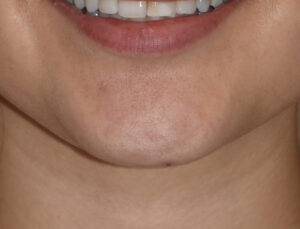
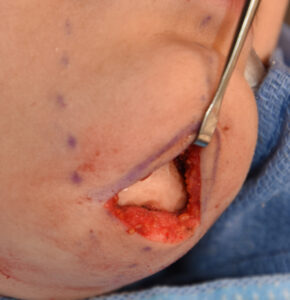
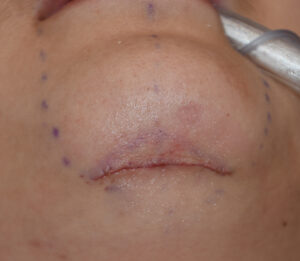

In the treatment of hyperdynamic chin ptosis the question is whether soft tissue, bone or both needs to be removed. In a very fleshy chin pad soft tissue excision alone may be sufficient. But most times it requires a combination of soft tissue excision which is aided by proving room for the tuck by the addition of the bone reduction.
Case Highlights:
1) Certain chin excesses appear primarily in an animated state as the chin pad pulls back against the bone, creating an unaesthetic profusion.
2) These hyperdynamic chin ptosis conditions can be due to excessive soft tissue chin pad tissue, bone or both.
3) A submental approach is needed in the correction of hyperdynamic chin ptosis.
Dr. Barry Eppley
Indianapolis, Indiana

